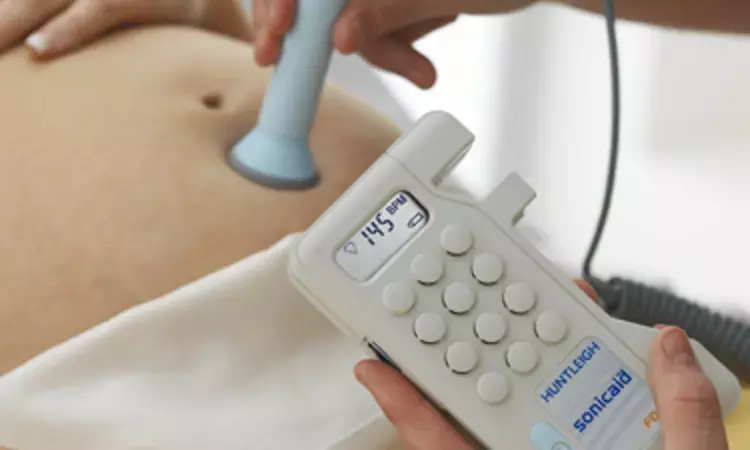- Home
- Medical news & Guidelines
- Anesthesiology
- Cardiology and CTVS
- Critical Care
- Dentistry
- Dermatology
- Diabetes and Endocrinology
- ENT
- Gastroenterology
- Medicine
- Nephrology
- Neurology
- Obstretics-Gynaecology
- Oncology
- Ophthalmology
- Orthopaedics
- Pediatrics-Neonatology
- Psychiatry
- Pulmonology
- Radiology
- Surgery
- Urology
- Laboratory Medicine
- Diet
- Nursing
- Paramedical
- Physiotherapy
- Health news
- Fact Check
- Bone Health Fact Check
- Brain Health Fact Check
- Cancer Related Fact Check
- Child Care Fact Check
- Dental and oral health fact check
- Diabetes and metabolic health fact check
- Diet and Nutrition Fact Check
- Eye and ENT Care Fact Check
- Fitness fact check
- Gut health fact check
- Heart health fact check
- Kidney health fact check
- Medical education fact check
- Men's health fact check
- Respiratory fact check
- Skin and hair care fact check
- Vaccine and Immunization fact check
- Women's health fact check
- AYUSH
- State News
- Andaman and Nicobar Islands
- Andhra Pradesh
- Arunachal Pradesh
- Assam
- Bihar
- Chandigarh
- Chattisgarh
- Dadra and Nagar Haveli
- Daman and Diu
- Delhi
- Goa
- Gujarat
- Haryana
- Himachal Pradesh
- Jammu & Kashmir
- Jharkhand
- Karnataka
- Kerala
- Ladakh
- Lakshadweep
- Madhya Pradesh
- Maharashtra
- Manipur
- Meghalaya
- Mizoram
- Nagaland
- Odisha
- Puducherry
- Punjab
- Rajasthan
- Sikkim
- Tamil Nadu
- Telangana
- Tripura
- Uttar Pradesh
- Uttrakhand
- West Bengal
- Medical Education
- Industry
Old way of Fetal Surveillance Better than New Approaches, claims study

Fetal surveillance is routinely offered to patients in labour to reduce the risk of adverse neonatal outcomes, as well as the risk of unnecessary emergency cesarean deliveries and other maternal interventions. In a recent study, researchers have reported that intermittent auscultation outperforms other fetal surveillance methods and improves both neonatal and maternal outcomes. The research has been published in the CMAJ on April 06, 2021.
Monitoring the fetal heart rate to detect intrapartum hypoxia using simple surveillance techniques, such as the Pinard stethoscope, has been practised for decades. Over the last 50 years, several newer surveillance methods have been evaluated, with varied uptake in practice. Cardiotocography (CTG) remains the most common surveillance method used in high-risk pregnancies. Physicians also prefer the combination with other surveillance methods, such as fetal heart electrocardiogram (STAN), fetal scalp pH analysis (FBS) or fetal pulse oximetry (FPO), and with computer-aided decision models (cCTG) to improve its diagnostic value. However, the effects of different methods on the risk of emergency cesarean deliveries remain uncertain. Therefore, Dr Bassel H. Al Wattar and his colleagues conducted a study to evaluate the effectiveness of different types of fetal surveillance.
In this systematic review and network meta-analysis, the researchers searched MEDLINE, Embase and CENTRAL for randomized trials evaluating any intrapartum fetal surveillance method. They included a total of 33 trials (118 863 patients) evaluating intermittent auscultation with Pinard stethoscope/handheld Doppler (IA), cardiotocography (CTG), computerized cardiotocography (cCTG), CTG with fetal scalp lactate (CTG-lactate), CTG with fetal scalp pH analysis (CTG-FBS), CTG with fetal pulse oximetry (FPO-CTG), CTG with fetal heart electrocardiogram (CTG-STAN) and their combinations. They performed a network meta-analysis within a frequentist framework and assessed the quality and network inconsistency of trials. They reported primarily on intrapartum emergency cesarean deliveries and other secondary maternal and neonatal outcomes.
Key findings of the study were:
Upon analysis, the researchers found that intermittent auscultation reduced the risk of emergency cesarean deliveries compared with other types of surveillance, except for STAN-CTG-FBS (RR 1.17)
◊ IA vs CTG: RR 0.83,
◊ IA vs CTG-FBS: RR 0.71,
◊ IA vs CTG-lactate: RR 0.77,
◊ IA vs FPO-CTG: RR 0.75,
◊ IA vs FPO-CTG-FBS: RR 0.81,
◊ cCTG-FBS vs IA: RR 1.21.
- They observed a similar reduction in emergency cesarean deliveries for fetal distress.
- However, they noted that none of the evaluated methods was associated with a reduced risk of neonatal acidemia, neonatal unit admissions, Apgar scores or perinatal death.
The authors concluded, "Compared with other types of fetal surveillance, intermittent auscultation seems to reduce emergency cesarean deliveries in labour without increasing adverse neonatal and maternal outcomes."
For further information:
Medical Dialogues Bureau consists of a team of passionate medical/scientific writers, led by doctors and healthcare researchers. Our team efforts to bring you updated and timely news about the important happenings of the medical and healthcare sector. Our editorial team can be reached at editorial@medicaldialogues.in.
Dr Kamal Kant Kohli-MBBS, DTCD- a chest specialist with more than 30 years of practice and a flair for writing clinical articles, Dr Kamal Kant Kohli joined Medical Dialogues as a Chief Editor of Medical News. Besides writing articles, as an editor, he proofreads and verifies all the medical content published on Medical Dialogues including those coming from journals, studies,medical conferences,guidelines etc. Email: drkohli@medicaldialogues.in. Contact no. 011-43720751


